Kinetic Facades
The Use of Kinetic Facades in Enhancing Daylight
Performance for Office Buildings
Rana Ahmed Bahaa El-Dabaa
In partial fulfilment of the requirements for the Award of the Degree of MASTER OF SCIENCE
in ARCHITECTURE ENGINEERING AND ENVIRONMENTAL DESIGN
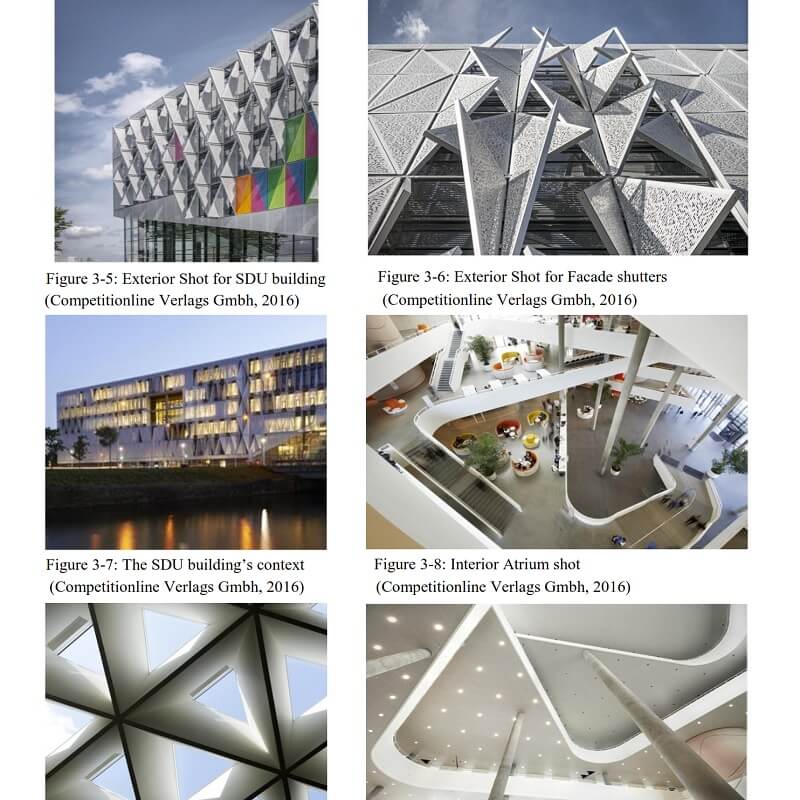
Daylight performance is an important factor in office building design. In this study by Rana Ahmed Bahaa El-Dabaa, a parametric script is developed for Kinetic facades to enhance daylight performance. Parametric Daylight simulation was performed through Rhino software using plugins Grasshopper and Diva with a Radiance interface to explore the applicability of parametric design in enhancing daylight performance.
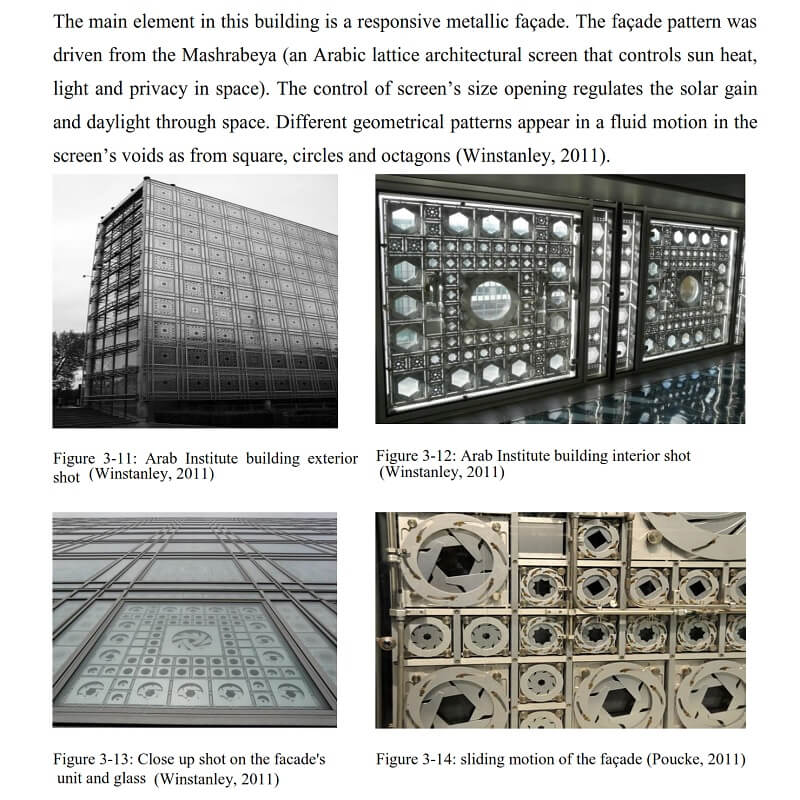
Two types of kinetic movements, rotation and vertical transition are applied on horizontal louvers of an office building’s south façade. The aim was to evaluate the effect of louvers configuration to achieve a balance point between sufficient illuminance level and light uniformity in space, to determine the optimum hourly pattern for louvers movement.
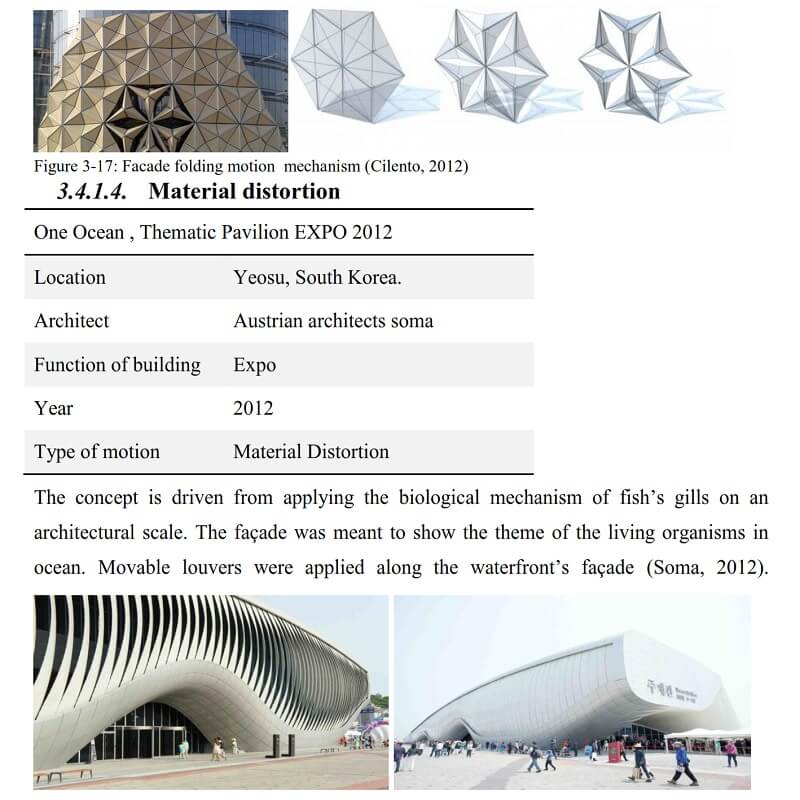
The study is divided into two parts; Theoretical part and an experimental part. The theoretical part uses a deductive method which deduces the main guidelines that is applied in the analytical part. While the experimental part used is a simulation study, that is used to evaluate daylight performance on a virtual prototype of an office building in a desert hot climate Cairo, Egypt. An hourly daylight script is proposed to enhance illuminance level and uniformity of light in space.
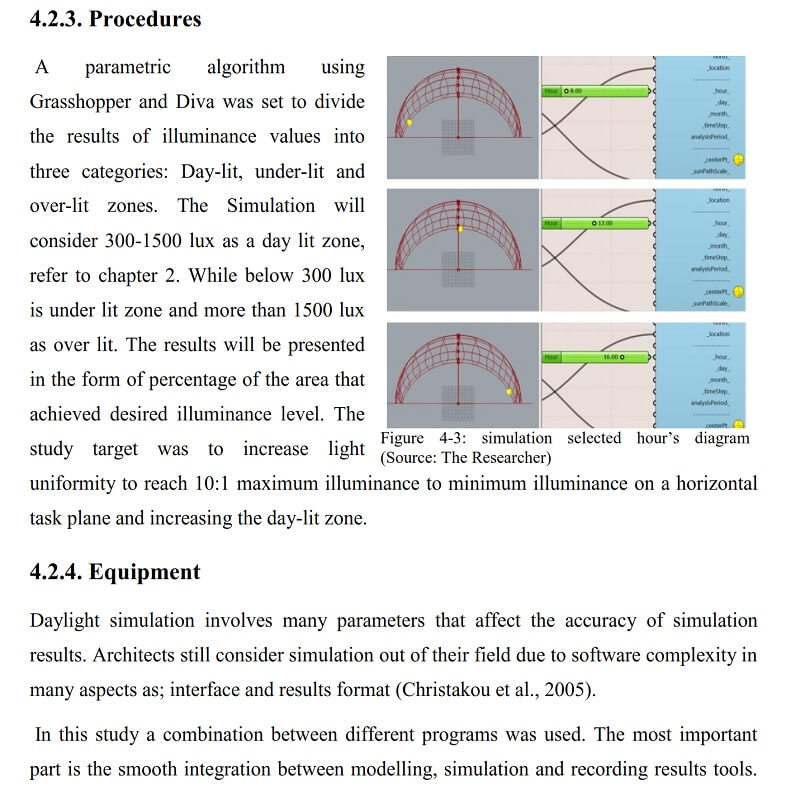
The illuminance values of studied hours were converted to a percentage format showing day-lit, under-lit and over-lit zones. Results showed that using well-studied kinetic louvers could increase the percentage of day-lit zone to reach 63% area of space, while the percentage was 53% area of space without shadings and 35% area of space with an unstudied kinetic system.
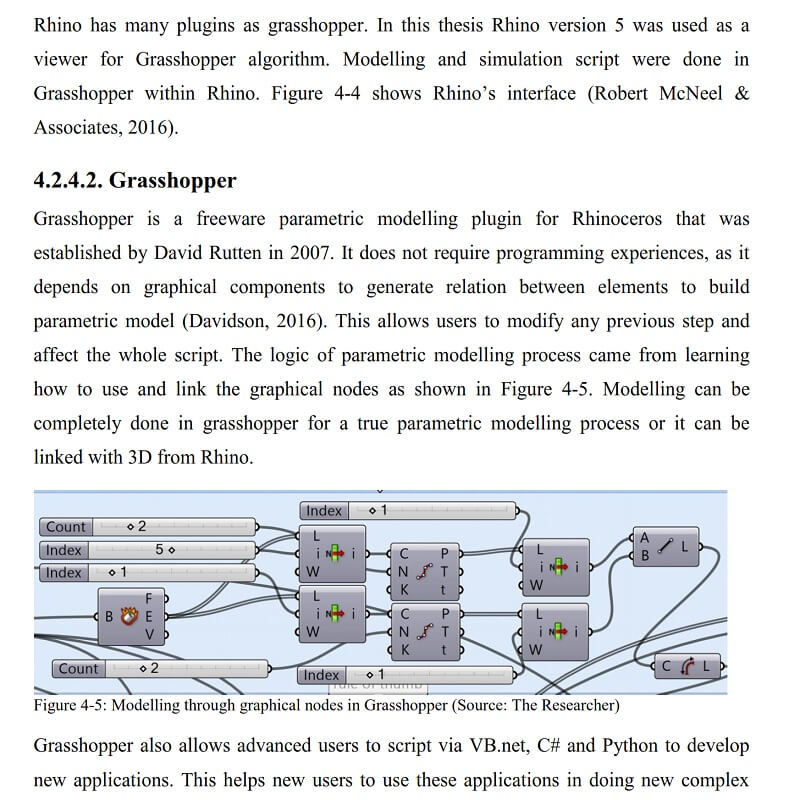
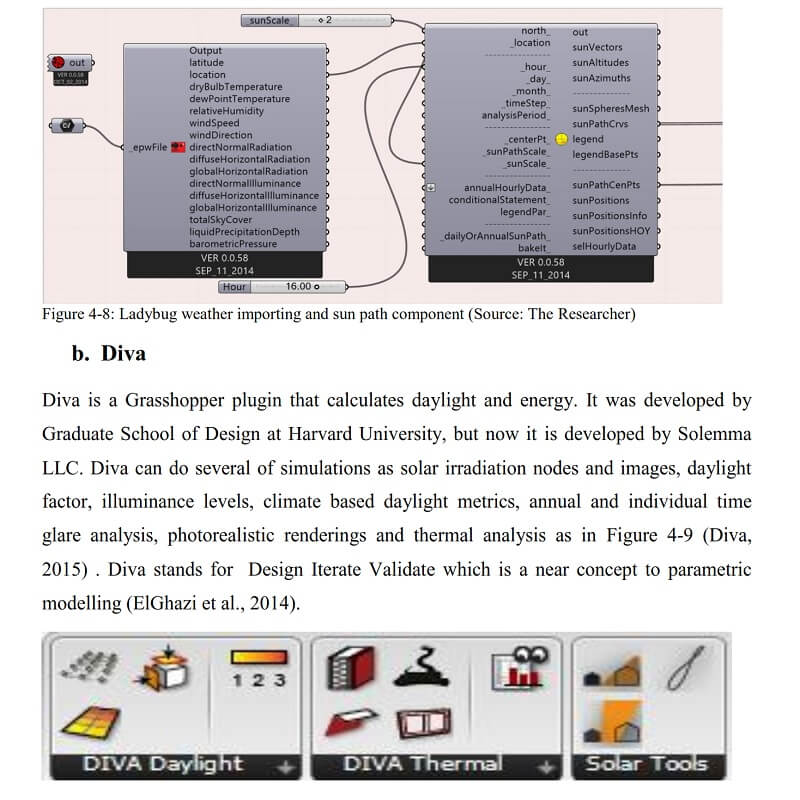
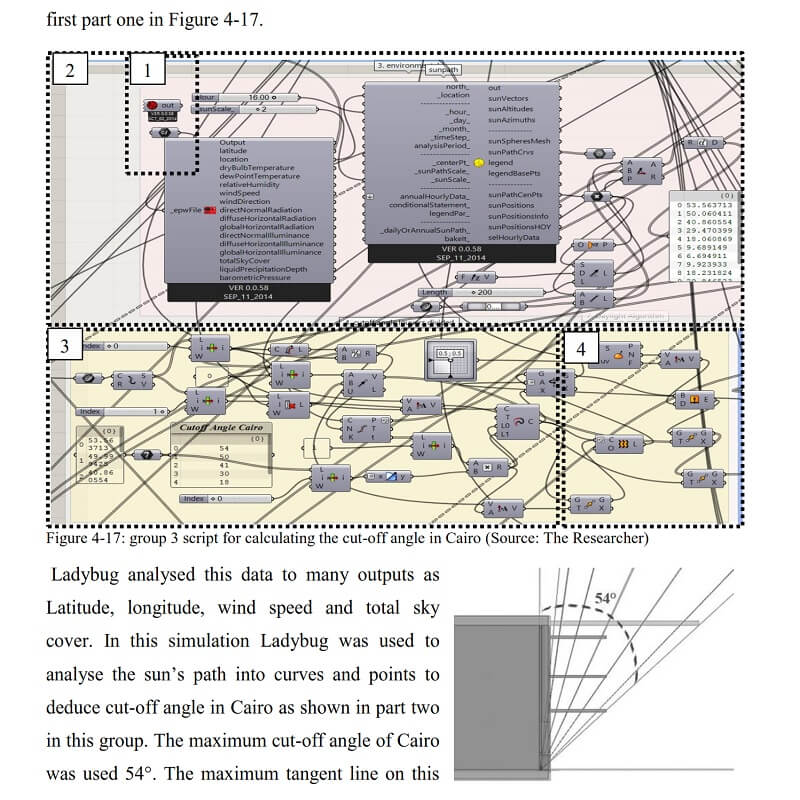
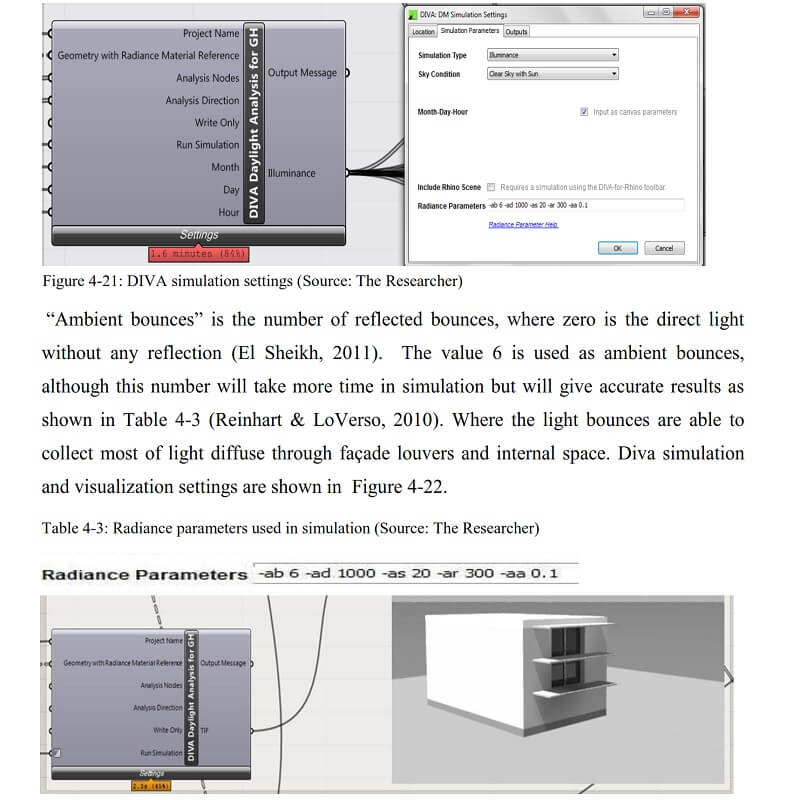
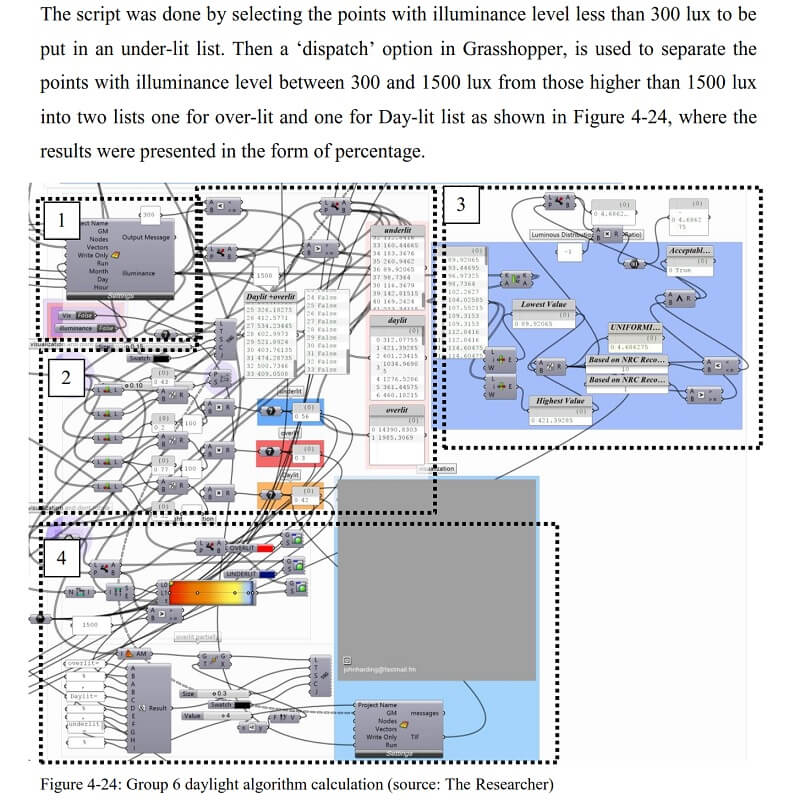
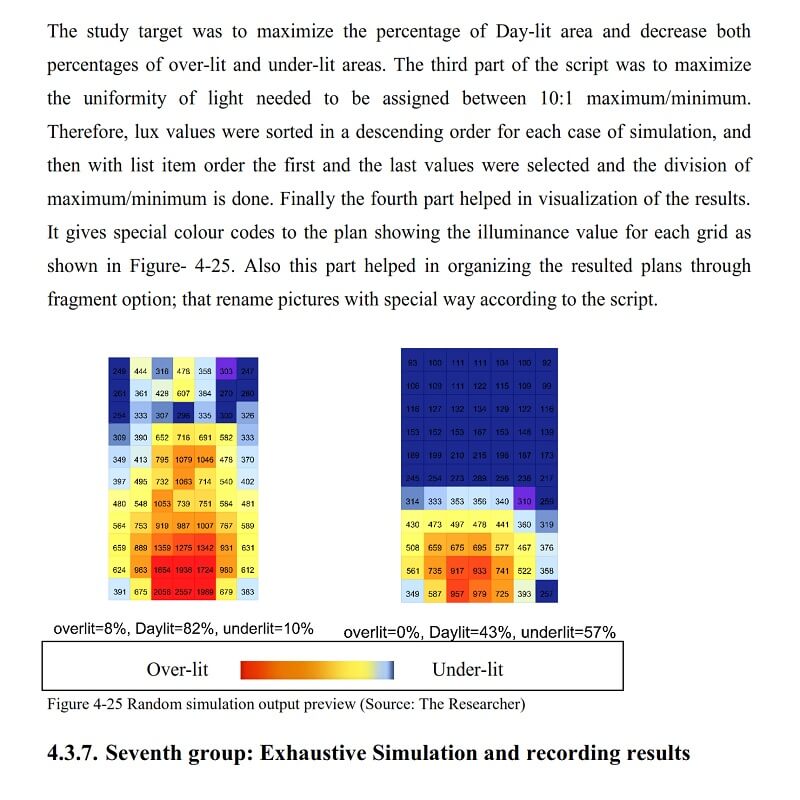




























Comments